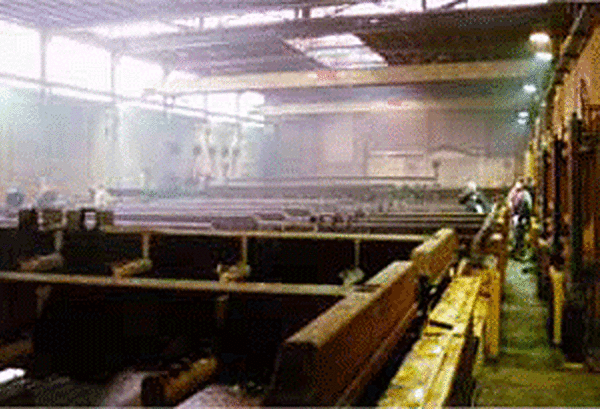Overchemical cleaning in Sulfuric Acid to Increase HDG Coating Thickness
What are the potential drawbacks of overchemical cleaning steel in sulfuric acid?
ASTM A385, Practice for Providing High-Quality Zinc Coatings (Hot-Dip), lists the recommended steel chemistry for batch hot-dip galvanizing known to provide high quality coatings. Listed within the specification are optimal ranges for elements such as Carbon, Manganese, Silicon, and Phosphorus. However, within these ranges exist steels known as “low silicon” or “low reactive” steels in the galvanizing industry because they contain very low levels of elements which act as catalysts in the metallurgical reaction forming the coating. Specifically, aluminum-killed steels and steels with very low silicon (less than 0.02%) and/or low phosphorus (less than 0.02%) regularly present a challenge in developing a galvanized coating that meets the thickness requirements of ASTM A123 or ASTM A153. The guidance within ASTM A385 states for these steels the galvanizer and purchaser should agree on a plan of action if low coating thicknesses are achieved. Some choices listed in the standard are to accept the lower coating thickness, apply a paint coating over the galvanized coating (Duplex System), blast clean the steel before hot-dip galvanizing to increase the coating thickness, or over-pickle the steel in sulfuric acid to roughen the surface and increase the coating thickness. None of these options are considered an equivalent substitute for employing proper steel selection, but can be considered when standard galvanizing practices are found to be unsuccessful.

In practice, you may find the galvanizer unable or unwilling to attempt the overchemical cleaning option even though it appears to be a quick, easy, and economical method to increase coating thickness. The primary reasons are related to ability of the galvanizer and the potential for a negative impact on quality, aesthetics, and use of the parts.
Sulfuric acid is utilized by approximately 40% of galvanizers in North America, so the galvanizer may not have this option available. Furthermore, some galvanizers that use sulfuric acid also use acid inhibitors to prevent overchemical cleaning the steel during normal galvanizing operations. Overchemical cleaning can also result in negative consequences, such as creating excessively rough galvanized coatings or coatings that have uneven appearances. This can be especially problematic for parts where fit-up is of concern or where smooth surfaces are required (e.g. handrail or parts to be painted after galvanizing). Since overchemical cleaning is not an exact science, there is also risk of overchemical cleaning too long and destroying the steel by excessive chemical attack. Therefore, overchemical cleaning is also not recommended to achieve increased coating thicknesses for low-reactive steels that are part of an assembly containing steels of different chemistry and/or surface conditions due to the risk of damaging other components in the assembly.
Though overchemical cleaning can be employed successfully to increase coating thickness, the risks and ability of the galvanizer should be evaluated. In all cases, direct communication regarding “low reactive” steels provides the galvanizer an opportunity to propose alternative galvanizing procedures to maximize the chance for increased coating thickness and suitable quality.
© 2025 American Galvanizers Association. The material provided herein has been developed to provide accurate and authoritative information about after-fabrication hot-dip galvanized steel. This material provides general information only and is not intended as a substitute for competent professional examination and verification as to suitability and applicability. The information provided herein is not intended as a representation or warranty on the part of the AGA. Anyone making use of this information assumes all liability arising from such use.

